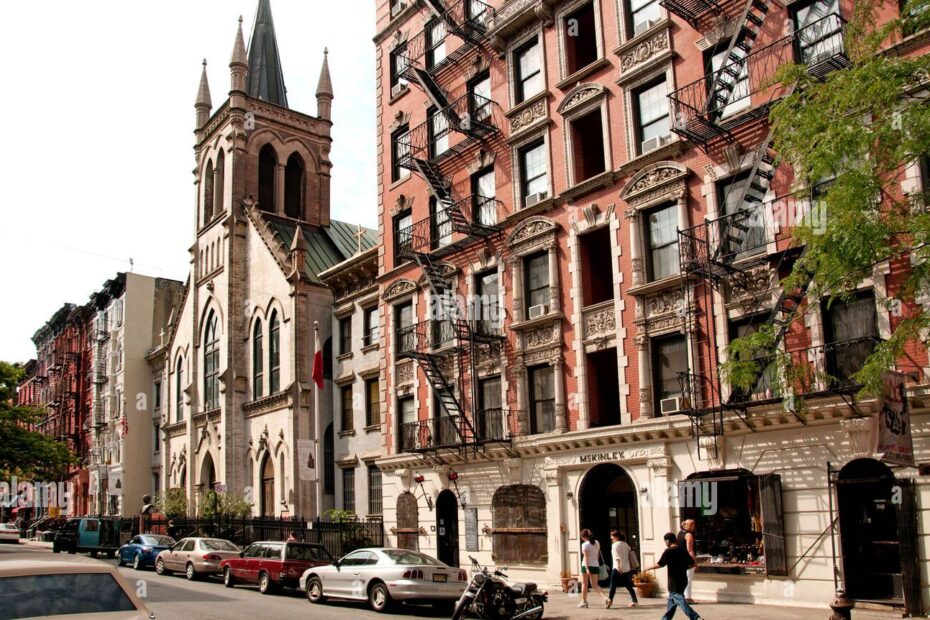Summary
Explore the history of New York City's Lower East Side through the stories of non-Jewish European and Muslim immigrants, including Ukrainians, Poles, Hungarians, Albanians, Syrians, and Turks. Learn how these diverse communities shaped the neighborhood’s rich cultural heritage, from cuisine to religious institutions.
The Diverse Immigrant Communities of the Lower East Side: A Look Beyond Jewish Populations
Though the Lower East Side is often recognized for its Italian, Asian, Hispanic, Irish, and German communities, it is most famously associated with Jewish immigrants. However, this historic Manhattan neighborhood was also home to other important, yet often overlooked, immigrant groups, including Orthodox Ukrainians, Poles, Hungarians, Lithuanians, Albanians, Syrians, Lebanese, and Turks. These diverse communities enriched the area with their distinct traditions, religious practices, and cultural contributions, collectively shaping the vibrant, multicultural identity of the Lower East Side.
Orthodox Ukrainians
Ukrainian immigrants began arriving in the Lower East Side in the late 19th century, largely to escape political and religious oppression and genocide in Eastern Europe. As Eastern Orthodox and Ukrainian Greek Catholics, they brought a distinctive cultural and religious identity. Many Ukrainians worked in factories or as construction laborers, and some opened small businesses, including bakeries and delicatessens that sold Eastern European foods.
St. George’s Ukrainian Catholic Church, founded in 1905, has been a cornerstone of the Ukrainian community for over a century. This church and similar institutions allowed Ukrainians to preserve their language, customs, and community bonds. Community events, folk music, and traditional art were also celebrated here, fostering a strong sense of Ukrainian identity and unity in their new homeland.
Polish Immigrants
Poles began arriving in the Lower East Side around the same time, motivated by political oppression and economic hardship. Polish immigrants established Catholic churches, such as St. Stanislaus Church, and social organizations that became essential support networks for new arrivals. Mutual aid societies helped Poles secure jobs, housing, and language classes. Many Polish immigrants worked as factory laborers, tailors, or shopkeepers, contributing to the local economy and culture.
Polish culinary traditions became part of the Lower East Side’s food scene, with foods like pierogi, kielbasa, and sauerkraut sold in local shops and markets. Polish influence gradually spread into nearby areas like Greenpoint, Brooklyn, but a Polish cultural presence remains in the Lower East Side today.
Hungarian Immigrants
Hungarians, including both Jewish and Christian immigrants, began settling in the Lower East Side in the late 19th century, many of whom were escaping political unrest in the Austro-Hungarian Empire. Hungarian Catholics and Protestants established their own churches and social clubs, offering a support system and community center for new immigrants.
Hungarian immigrants contributed to the Lower East Side through bakeries, cafes, and shops. Their cuisine introduced Hungarian pastries and hearty goulash to the New York food scene. Over time, many Hungarian families moved to Yorkville, where a strong Hungarian community still exists today, but the legacy of Hungarian cultural events and cuisine on the Lower East Side remains notable.
Lithuanians
Lithuanian immigration began in the late 19th century as Lithuanians fled religious and political oppression under Russian rule. Many Lithuanians were Catholic, and St. Casimir’s Church on the Lower East Side served as a vital community hub. Lithuanians found work in factories, tailoring, and other trades, and as the community grew, they opened small businesses such as bakeries and cafes.
Lithuanian immigrants also placed a high value on cultural preservation, forming clubs and hosting events where traditional music, dance, and crafts could be shared. Although many Lithuanians later moved to other neighborhoods, their cultural contributions left an enduring mark on the Lower East Side.
Albanians
Albanian immigrants, many of whom were Muslim, arrived in the early 20th century to escape political and economic instability in the Balkans. In the Lower East Side, Albanians found jobs in food service, textiles, and construction. Their small businesses, especially grocery stores and cafes offering Mediterranean and Balkan foods, became gathering spots for the Albanian community and introduced New Yorkers to Albanian culinary traditions.
Albanians often formed tight-knit community networks to preserve their language and cultural identity. Mosques and cultural centers eventually provided Albanians with places to worship and gather, and these institutions also helped other Muslim immigrant groups integrate into American life while maintaining their religious practices.
Syrian and Lebanese Muslims
Syrian and Lebanese Muslims were among the first Muslim groups to arrive in New York City in the late 19th and early 20th centuries. Although many initially settled in “Little Syria” south of the Lower East Side, a portion of this community expanded into the Lower East Side itself. Syrian and Lebanese immigrants worked as peddlers and shopkeepers, selling goods such as textiles, foods, and handcrafted items.
These immigrants helped introduce Middle Eastern cuisine, such as hummus, pita bread, and baklava, to New Yorkers. Despite the displacement of Little Syria due to development, these early Muslim communities laid the foundation for broader acceptance and appreciation of Middle Eastern culture and cuisine across the city.
Turkish Immigrants
Turkish immigrants added another unique layer to the Lower East Side’s cultural diversity. The first wave of Turkish immigrants arrived in the late 19th and early 20th centuries, often fleeing political pressures in the Ottoman Empire. As Muslims, Turks practiced their religion alongside other Muslim groups on the Lower East Side, establishing informal worship spaces before formal mosques became accessible.
Turkish immigrants worked in a variety of industries, including tailoring, peddling, and food services. Turkish-owned cafes became social hubs, where both traditional Turkish and American foods were served, and Turkish coffee culture began to gain local appreciation. Over time, Turkish culinary traditions and cultural practices—including music and the arts—became part of the Lower East Side’s multi-ethnic mosaic, even as the community spread to other parts of New York.
Each of these communities contributed to the Lower East Side’s development in different ways, from establishing religious institutions and social clubs to opening shops and restaurants that introduced new foods and customs to the city. While many of these communities eventually moved to other neighborhoods, their legacies remain part of the Lower East Side’s history and identity.

Eric is a 4th generation Lower East Sider, professional NYC history author, movie & TV consultant, and founder of Lower East Side History Project.
